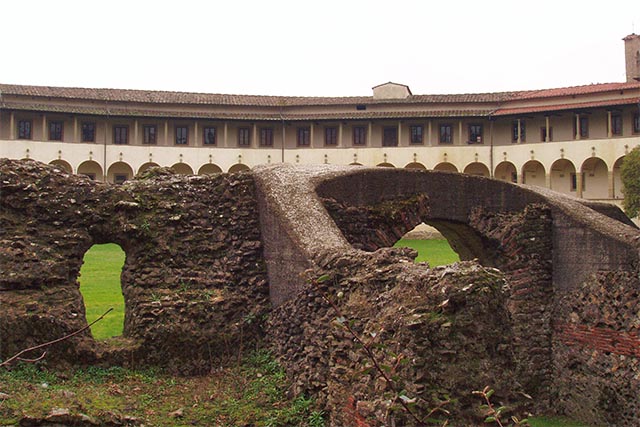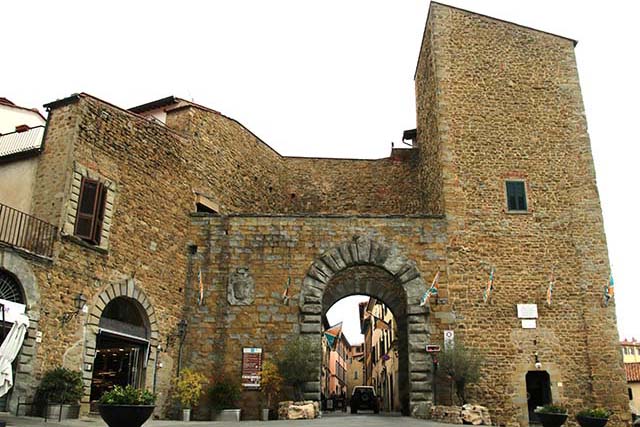Municipality of Arezzo
Arezzo was one of the principal towns on Leonardo da Vinci’s itinerary when he was traveling, studying and working in Tuscany. It appears no less than twice on maps conserved in the Royal Collection at Windsor Castle and is mentioned many times in his notebooks. Due to its strategic location midway between the Tirrhenian and Adriatic coasts, the town flourished and as a consequence attracted many artists who embellished it with works of art, such as the celebrated fresco cycle The Legend of the True Cross by Piero della Francesca. In the town’s Duomo is a stained glass window dating to the 16th century in which one of the figures depicted could be Leonardo himself.
During the Renaissance Arezzo was a key junction for highways running westward toward the Adriatic Sea, but another aspect of the town attracted the interest of Leonardo as well – its long history and ancient artefacts dating to the Etruscan, Hellenistic and Roman periods, which had already exerted an influence on Donatello and Verrocchio. This legacy from the past is conserved in the Museo Archeologico Nazionale ‘Gaio Cilnio Mecenate’, named after one of the town’s most famous sons – Gaius Cilnius Maecenas, counselor, ally and friend of the emperor Augustus.
From his notes it is evident that Leonardo visited this ancient hamlet located south of Arezzo, which he referred to as “Castiglion Aretino”, more than once and from there conducted detailed surveys of the territory. For example, on a map he provides the distance in miles from the village to other localities in the area; on another folio he provides an accurate description of the hamlet’s defences; and finally in the Codex Atlanticus he records data on the lengths of waterways and the distances covered by the principal roads in the territory.







